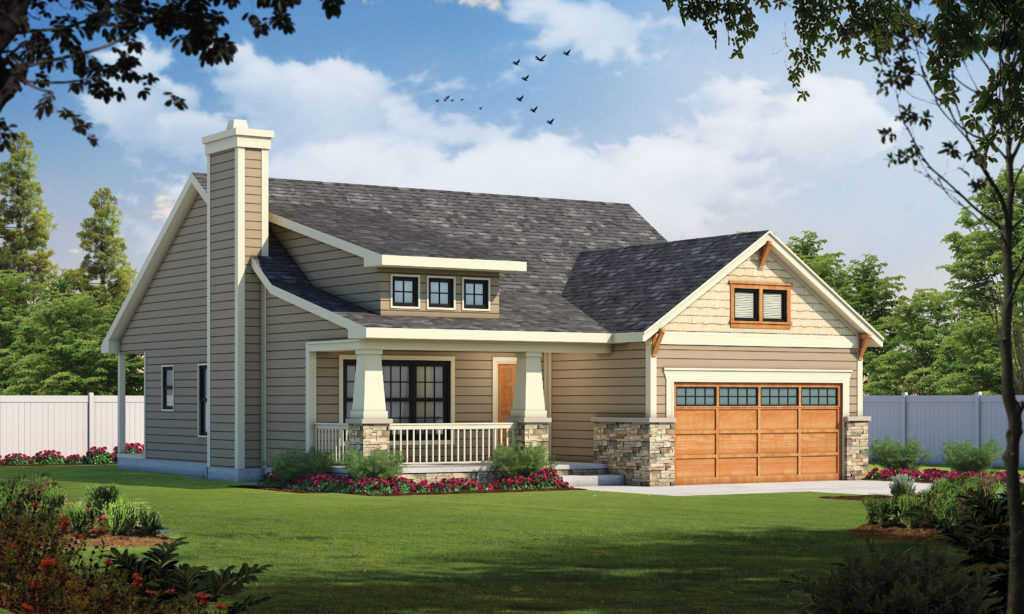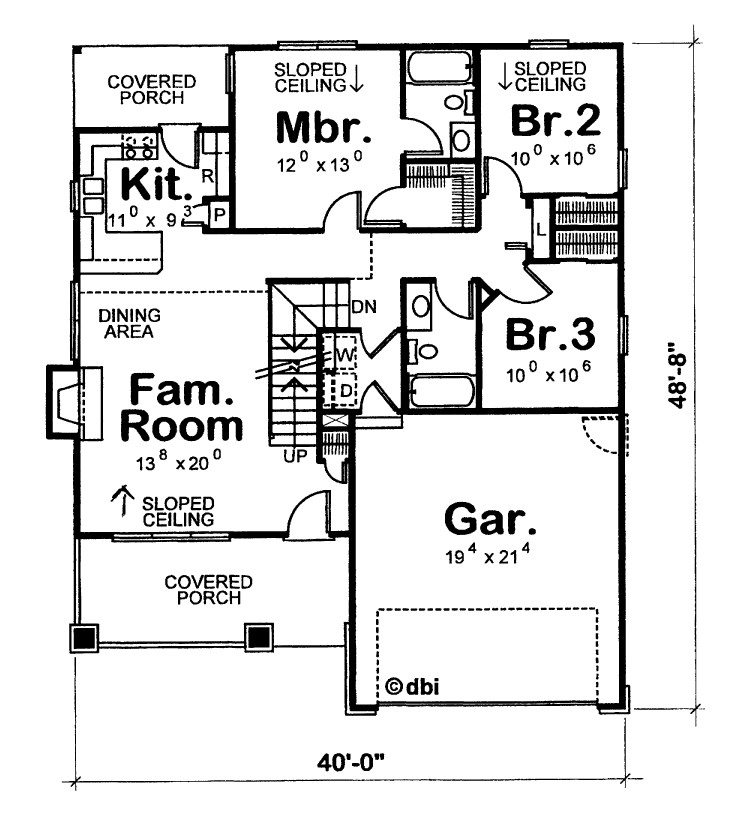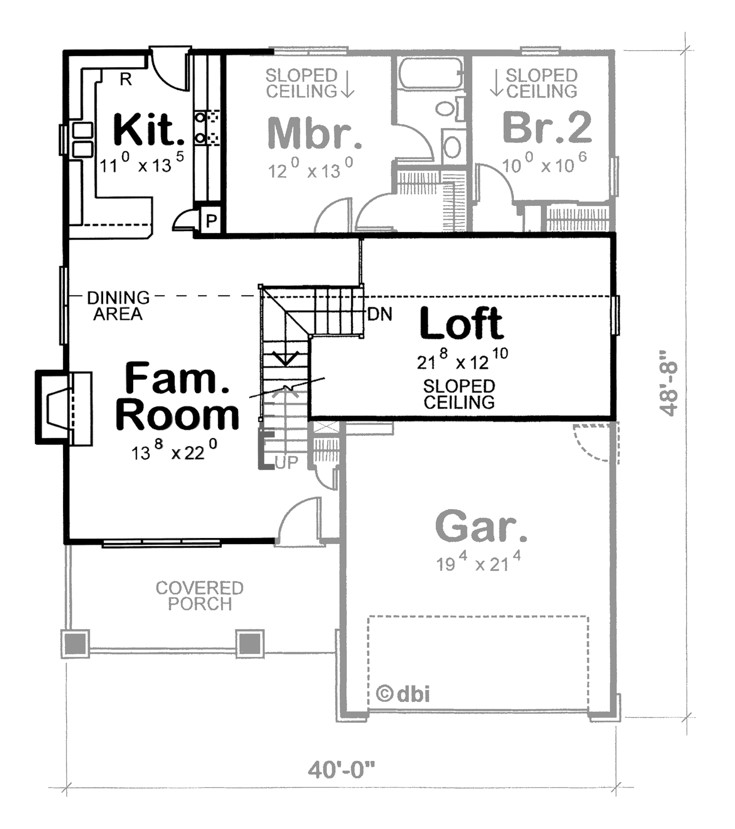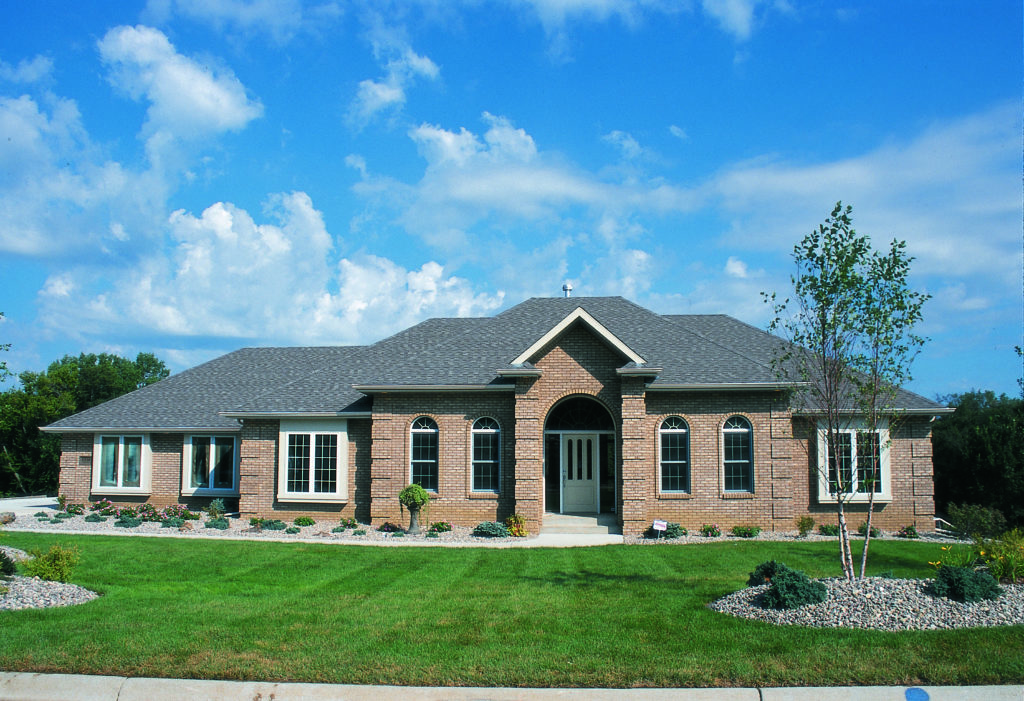Structural Insulated Panels (SIP) are most often made from two “skins” of oriented strand board (OSB) sandwiching a thick slab of insulating foam. SIPs can be various sizes, from smaller panels that can be set in place by two people, to larger panels set in place with a crane. SIPs are used for roofs and exterior walls to create highly energy-efficient homes that are also stronger and safer than most traditionally built homes.
There are minimal design limitations with SIPs and most existing home designs can be adapted for SIP construction. SIP roof systems create natural design opportunities, such as cathedral and sloped ceilings.
For Example: Design Basics’ Kendrick plan (#8532SUL), adapted for Insulspan® brand SIPs, offers dramatic amenities not found on the conventionally framed Kendrick plan including sloped ceilings for much of the main floor plus a 262 sq. ft. loft overlooking main floor entertaining.
Energy Efficient. One of the primary ways homes lose energy are air leaks (how “tight” a home is). On a cold winter day, you pay a lot of money to heat the air in your home, only to have most of that “conditioned air” leak out within an hour! Since the air pressure inside your home has to equal the air pressure outside, the warmed air that leaked out gets replaced by cold outside air that leaks in. By their very nature, the panels used in SIP construction create a very tight home with minimal air leakage.
Insulation is designed to minimize the other primary reason for energy loss, conduction, heat transfer through walls, windows, the roof, etc. Fiberglass is the most common insulation material used in homes and can work well, but some wall cavities are challenging to fill completely, particularly around plumbing and electrical. Many traditional insulation products also tend to settle, leaving a gap at the top. Such challenges potentially leave voids that show up in your home as “cold spots.” Also, with conventional framing, the wood studs, typically spaced 16 inches apart, are quite poor insulators. Exterior wall and roof insulation’s effectiveness is measured by R-value. SIP manufacturer Energy Panel Structures reports that a conventional 2×6 framed wall filled with R-19 insulation actually delivers an R-value of 13.7, 80% poorer than a comparable SIP wall, which achieves R-24.7.
Green. Since SIP constructed homes use considerably less energy than traditional construction, SIP homes are inherently environmentally responsible. And because SIP panels are precision cut and delivered to the jobsite, there is considerably less jobsite waste from building your home that ends up in a landfill.
The home at right (Greensboro – #2326) was built using Insulspan SIP construction.
What does building your new home with SIPs say about you? That you care about a quieter, healthier home for your family. That building a stronger, more comfortable home were high priorities. That doing your part to protect our environment and being kind to Mother Nature matter. That you wouldn’t settle for less than building an energy-saving home with lower utility bills.
View dozens of homes designed for SIP construction on our website. Design Basics can also adapt our other, stick frame home plans for building with SIPs.




